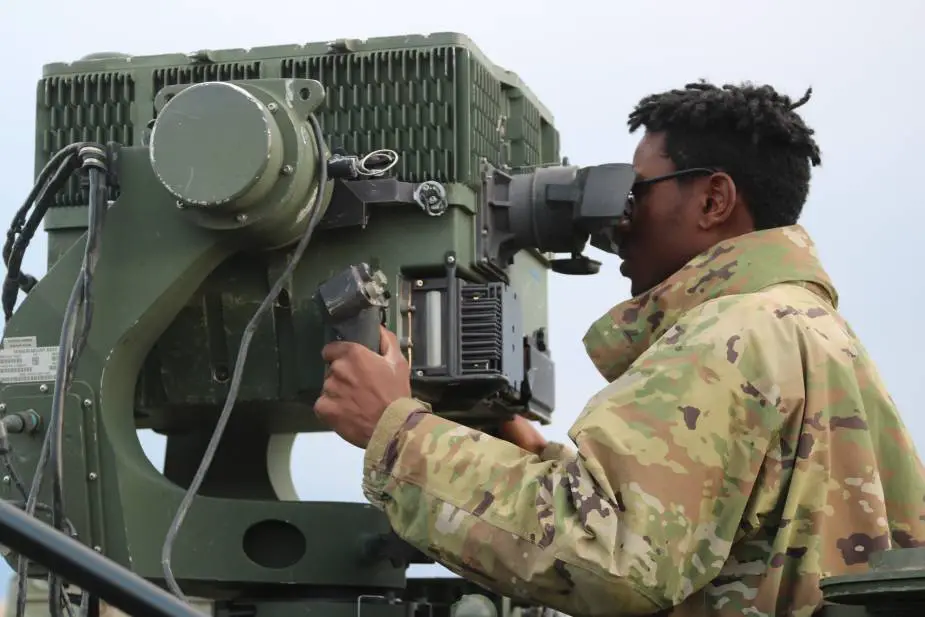Breaking news
US Army 4ID Stryker Brigade Combat Team tests Army newest mounted GPS devices.
4th Infantry Division Soldiers tested the Army’s next-generation Assured Positioning Navigation and Timing (APNT) solution here, which allows Soldiers to maintain the integrity of position and timing in GPS-contested environments. Maj. Matthew Truax, Test Officer, Intelligence Electronic Warfare Test Directorate, U.S. Army Operational Test Command, reports.
Follow Army Recognition on Google News at this link

Spc. Caleb Green of 2nd Battalion, 13th Field Artillery Regiment, 1st Stryker Brigade Combat Team, 4th Infantry Division, prepares for his nightly call-for-fire mission with the Long Range Advanced Scout Surveillance System (LRAS) mounted on top of one of his Fire Support Vehicle (Stryker). (Picture source: Gregory Dalglish, Test Officer, Intelligence Electronic Warfare Test Directorate).
The Mounted Assured Position Navigation and Timing (MAPS) will integrate across the Army’s wheeled and tracked platforms, bringing heightened protection levels against evolving GPS threats to support multi-domain operations.
During the first week of testing, 1st Stryker Brigade Combat Team (1SBCT) Soldiers received New Equipment Training (NET) to familiarize them with the MAPS system capabilities and user interface. Throughout the rest of the test, they provided feedback on the system during operationally realistic missions, including Call for Fire (CFF), Reconnaissance, Quick Reaction Force (QRF) and Medical Evacuation (MEDVAC) in a GPS degraded environment. “I’ve never seen what happens to GPS Systems when they encounter an Electronic Warfare (EW) attack,” said Capt. Christopher Mazeau, Assistant Operations Officer for 1SBCT. He said he is glad to see the Army is working to develop an answer to such threats.
MAPS is designed to support command and control by replacing the need for multiple GPS devices on a single platform, and it also helps to mitigate EW attacks with an onboard anti-EW antenna.
The system aligns with the Army Futures Command (AFC)-directed requirement to prepare for tomorrow by providing overmatch in multi-domain operational environments.

Staff Sgt. Nicholas Cunningham from the Fort Huachuca, Arizona-based Intelligence Electronic Warfare Test Directorate, U.S. Army Operational Test Command, prepares for his nightly mission as a data collector. (Picture source: Gregory Dalglish, Test Officer, Intelligence Electronic Warfare Test Directorate)
Intelligence Electronic Warfare Test Directorate
IEWTD executes independent operational testing of intelligence, surveillance, and reconnaissance (ISR); EW; biometrics (BM); and intelligence analysis systems to inform acquisition and fielding decisions for Army and select multiservice warfighting systems. Additionally, IEWTD provides threat and ISR simulation and instrumentation support for internal and external test events.
U.S. Army Operational Test Command
As the Army’s only independent operational tester, it enlists the “Total Army” (Active, National Guard, and Reserve) when testing Army, joint, and multi-service warfighting systems in realistic operational environments, using typical Soldiers to determine whether the systems are effective, suitable, and survivable. OTC is required by public law to test major systems before they are fielded to its ultimate customer — the American Soldier.


























